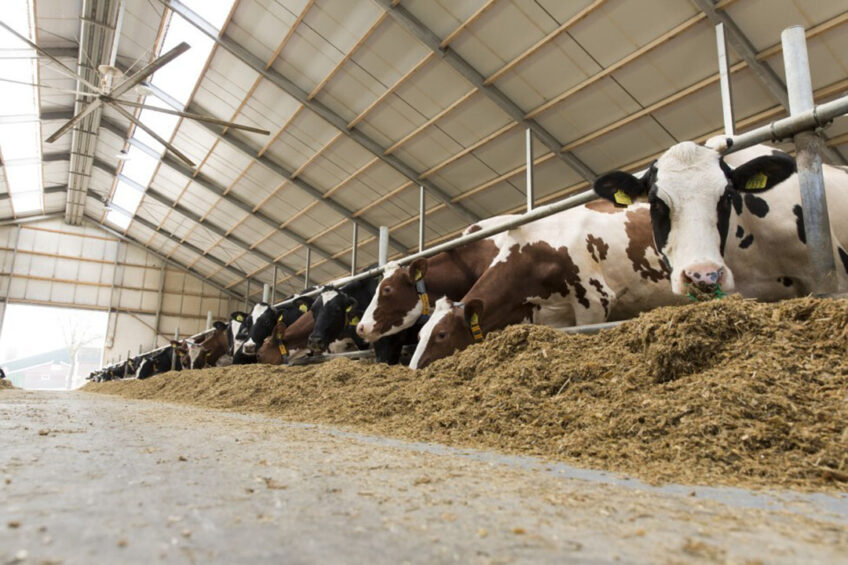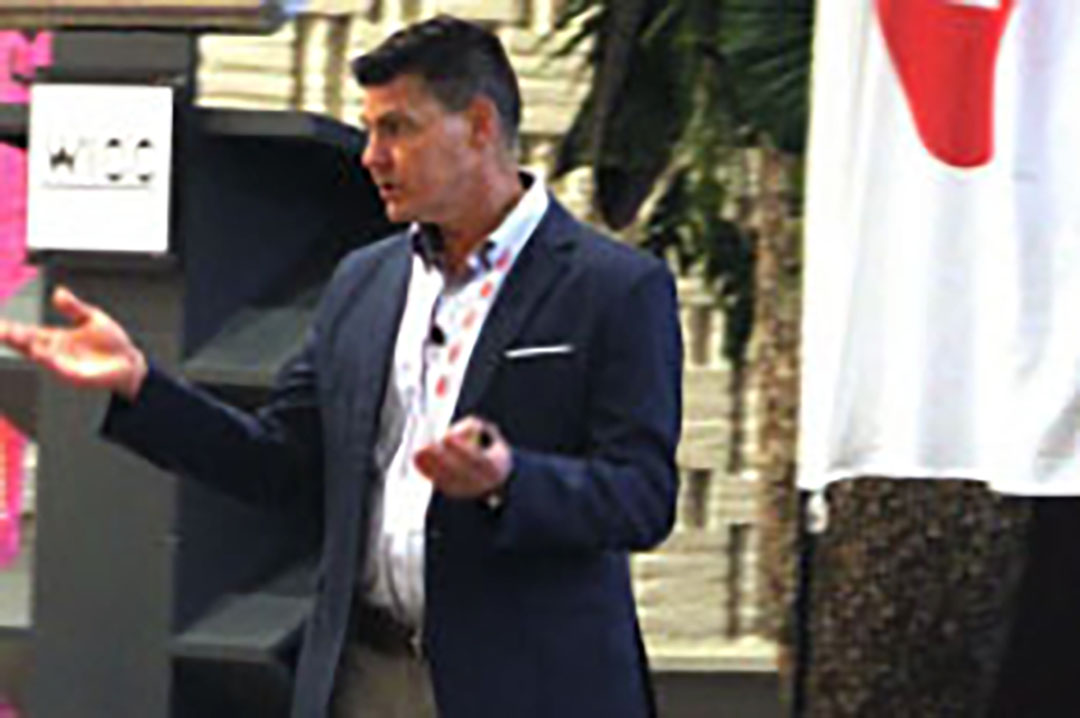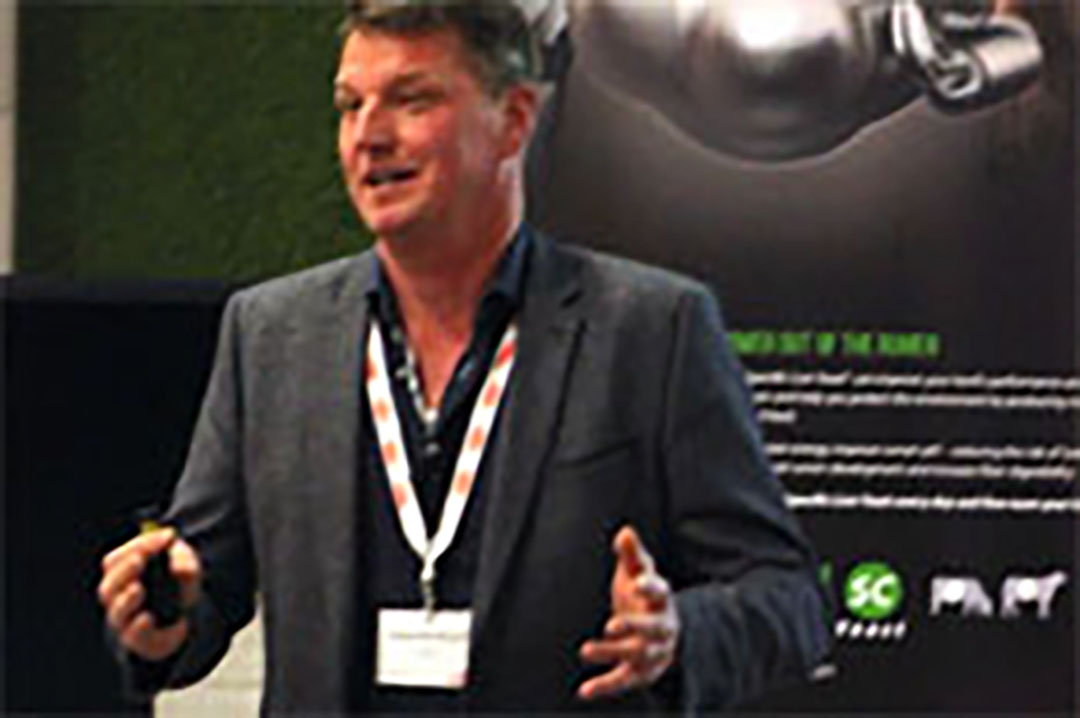Dairy cows in 2023: Focus on welfare and precision feeding

In November, Lallemand Animal Nutrition held a seminar in Wageningen, the Netherlands, which explored the topics of dairy cow welfare and precision feeding. The event titled ‘Feeding dairy cows in 2023, the latest updates: Welfare and precision feeding’ gave a deeper insight into dairy cow nutrition, keeping in mind the welfare aspects.
This seminar comes in the midst of increasing (feed) costs for farmers – the topic of precision feeding is therefore more important than ever.

The presentations kicked off with Professor Trevor de Vries, professor and Canada Research Chair at the University of Guelph. He talked about the ‘The feeding and eating behaviour of cows, and the ‘do’s and dont’s’ for rumen efficiency’.
“Why should we care about feeding behaviour?” he asked. He answered this question by saying that feeding behaviour is directly linked to rumen function and health. He also touched on some points that are important to consider when it comes to feed management and behaviour.
“How cows eat is just as important as dietary composition. The farming operation should take note of the feeding behaviour of cows, as highly efficient cows have a slower eating rate. If the animals are competing for feed, the intake isn’t optimal,” he noted.
Other points included the following:
- Rumination time: More rumination time equals greater intake. Cows need time and space to ruminate and be productive.
- Proper feed management: Think about feed quality, quantity, type and particle size. Minimising sorting behaviour – what a cow consumes from her diet – also has an impact on the function of her. Cows tend to sort, which can cause inconsistency of what she consumes. Straw size is an important factor, too.
- Availability of feed and water: Ensuring that feed is pushed up frequently and is available allows cows to use their time efficiently, which increases milk production. Also, minimise their standing time and time without feed. This would otherwise lead to rumen acidosis and reduced NDF digestibility. It is also important that they rest because “you want them to be productive”. Availability of the feed also minimises overcrowding at the feed bunk. More bunk space means improved eating behaviour.
When highlighting the points above, De Vries said that simple solutions can often combat bigger problems and implementing these can have a major impact on the herd. “Diets should be formulated to encourage consumption of small, frequent meals, which are difficult to sort and which stimulate rumination,” he said, adding, “Feed additives can be used to stabilise rumen conditions.”

The second presentation was given by Bertjan Westerlaan DVM, Vetvice. He looked at ‘Precision feeding and the factors that have the biggest effect on rumen health and milk production – the ration or the farm management’. In his presentation he highlighted the importance of not making cows wait for feed and that there are signs to take note of in order to make sure that feed and welfare is a priority. “Cows should eat 12 equal meals a day at the feed fence,” he said, also highlighting that the state of equipment should be regularly checked, noting that in 20 farms visited, 25% of mixerwagons had poor maintenance. This is important to note in proper feed management.
In addition, he highlighted these points:
- Water: Make sure there is unlimited access to water. Troughs should be a good height with 2 water troughs per pen and placed where it is easy to access. Water supply should meet demand on the hottest days.
- Manure: Keep an eye on the manure – the score for manure should ideally be at number 3.
- Housing: A dry and clean environment is essential. Think about temperature, humidity, housing conditions like cooling systems.
- Lying time: Good bedding is essential to encourage 12-14 hours of lying time, which is important for milk production.
- Feeding: In a competitive environment, cows will eat less. Feed should be palatable with correct particle size. Make sure that the mixer wagon is working properly, he highlighted. Factors that contribute to variation in TMR should be looked at, like equipment wear, pre-batch variation, grain particle size variation, loading liquids, ingredient mix order, etc.
Frequent feeding and not having cows wait was a thread throughout all the presentations. Not having feed available means:
- Hungry animals leads to stress
- Loss of microbial mass to the omasum/intestines
- Larger next meal – slug feeding
- More acid production
- Lower digestibility
- Loss of efficiency
- Risk for hind gut fermentation/leaky gut
He added that longer lying times mean that there will be more rumination and better claw health, and, in addition, higher feed intake. Westerlaan noted that it is vital to check cows – as mentioned, the manure score gives an indication of cow health, hooves should be checked, as well as rumen fill. His message was clear regarding rumen health: “If the rumen is not ok then the cow is not ok”.

In the third presentation, Nico Vreeburg DVM, Lallemand Animal Nutrition, focused on ‘Feed management and cows’ visible signs, and how nutritionists can support rumen and cow health‘. During his presentation, he pointed to a slide photo of a cow barn, and the audience had to take a close look at what was happening in the picture. The audience was encouraged to describe what was seen and what this meant within the barn environment.
The idea was to identify how the cows were set up to eat and what challenges there were with the ‘feeding and rumen signals’. Was there enough space at the feedbunk? Were some cows better situated in the barn? How far is the walk to the feed bunk? Which cows are getting to the feed? He highlighted that it is important to ensure that the barn design is ideal and that there is enough space and capacity. He highlighted that the main challenges of productive dairy cows today are:
- Dry period
- Transition
- Calving
- Start of the lactation (management)
- Overcrowding
- Social stress (heifers)
- Heat stress
- Bad barn design
- Lying time
- No feed available
He noted the importance of ‘doing the right thing’ and highlighted proper feed management during the transition period: “It is likely that by doing the right thing during the transition period, the farm will be a successful one.” He added that this plays a key role in rumen health. Vreeburg said that poor early lactation management affects long-term locomotion and animal performance, therefore it is vital to make sure that this is properly managed.
On the topic of heat stress and references to research, he added that offspring of cows who had heat stress (especially during the dry period) will produce less milk. “Invest in ventilation/fans and cooling mechanisms during hot days,” he stressed, noting that there are not only short-term but also long-term negative effects if this does not happen. With tropical summers increasing we have to find solutions – even simple solutions can help with cooling and hence combat the negative consequences of heat stress, Vreeburg said.
He touched on the fact that live yeast helps maintain ruminant performance and feeding behaviour during heat stress period.






